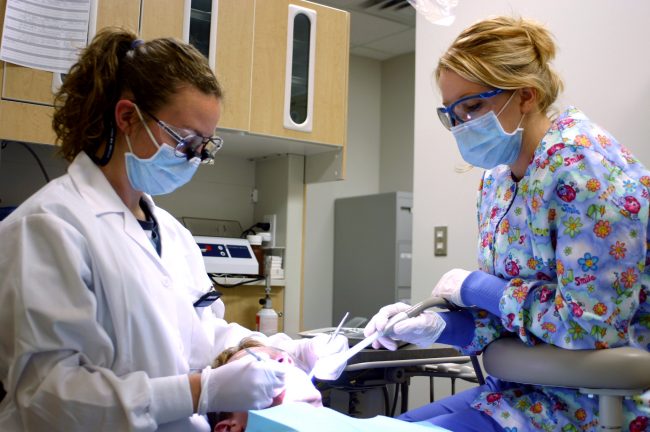
How COVID-19 Has Changed the Dental Assisting Profession
Author: Dr. Casey Hart
The COVID-19 pandemic has had a profound impact on the healthcare industry, and dental assisting is no exception. From enhanced infection control protocols to new patient care procedures, dental assistants have had to adapt quickly to ensure safety while maintaining high-quality care. Here’s how the profession has changed and what it means for current and future dental assistants.
1. Enhanced Infection Control and Safety Protocols
One of the most significant changes in dental assisting post-COVID-19 is the heightened focus on infection control. Dental assistants now follow stricter guidelines, including:
-
Increased use of personal protective equipment (PPE), such as N95 masks, face shields, and disposable gowns.
-
More rigorous sterilization and disinfection of dental instruments and treatment areas.
-
Implementation of enhanced air filtration and ventilation systems in dental offices.
2. Changes in Patient Interaction
To minimize the risk of virus transmission, dental assistants play a more active role in managing patient flow and safety, including:
-
Conducting pre-screening health questionnaires and temperature checks before appointments.
-
Enforcing social distancing in waiting rooms and reducing patient capacity.
-
Educating patients on new safety measures and post-visit care instructions.
3. Increased Use of Teledentistry
The rise of teledentistry has transformed how dental professionals interact with patients. While dental assistants still play a vital hands-on role, they now:
-
Assist in setting up and managing virtual consultations.
-
Help dentists review digital dental images and patient records remotely.
-
Educate patients on at-home oral care and post-treatment guidelines through virtual platforms.
4. Expanded Responsibilities for Dental Assistants
With the changes brought by COVID-19, many dental assistants have taken on additional responsibilities, such as:
-
Administering COVID-19 screenings and tests for patients and staff.
-
Handling increased administrative duties, including digital patient record-keeping.
-
Assisting in implementing and maintaining new safety policies within the office.
5. Increased Demand for Dental Assistants
As dental offices continue to adjust to the post-pandemic landscape, the demand for skilled dental assistants has grown. Many offices require additional staff to manage safety protocols, patient care, and new operational workflows.
6. The Future of Dental Assisting Post-Pandemic
The long-term effects of COVID-19 on the dental assisting profession will continue to shape the industry. Some expected trends include:
-
Permanent integration of advanced infection control practices.
-
Ongoing training in pandemic preparedness and emergency response.
-
Greater emphasis on digital tools and remote patient interactions.
Start Your Dental Assisting Career with Confidence
If you’re considering a career in dental assisting, understanding these changes is key to your success. At Dental Careers Institute (DCI), we provide comprehensive training that prepares students for the evolving landscape of dental care. Visit mydentalcareers.com to learn more and start your journey today!
The COVID-19 pandemic has reshaped the dental assisting profession in many ways, reinforcing the importance of adaptability and ongoing education. By staying informed and embracing these changes, dental assistants can continue to provide exceptional care while ensuring patient and staff safety.
